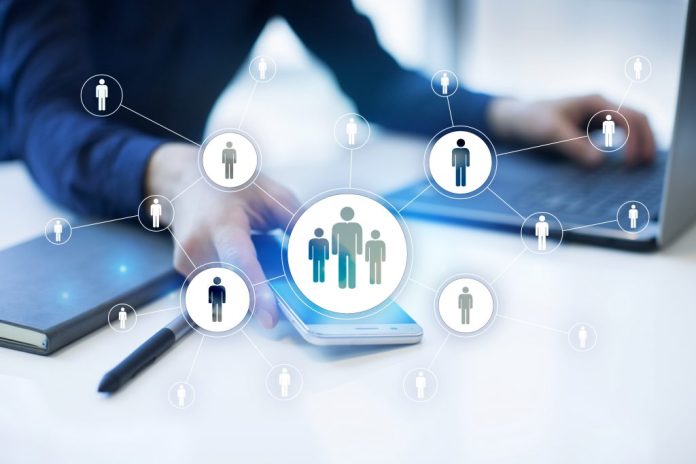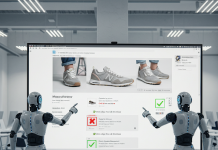As the world continues to change rapidly, businesses must adapt to keep up with the latest human resource management technology developments.
Technology advancements enable automation and optimization of various HR processes, reducing manual tasks. Digital transformation leads to increased efficiency as HR personnel can allocate their time and resources more effectively. Processes such as talent acquisition, onboarding, employee time tracking, performance, training and development, payroll, and benefits management can be completed faster, improving overall HR operations.
In this article, we will discuss the digital transformation in HR management, the future of HR technology, and the best practices to embrace it.
How Technology has Changed HR Management
The traditional method of HR management includes manual filing systems for keeping employee records and capturing time and attendance through punch cards. Today, HRM has moved into the Cloud, and Software as a Service (SaaS) platforms have swiftlydeveloped. The ability to access HR management systems remotely and increase in data storage and computing capacity have led to the rise of more advanced reporting and analytical capabilities.
The modern platforms are built from an employee perspective, as employee experience and data intelligence are prioritized. This results in a move away from traditional functional and IT infrastructure. Self-service portals were integrated to reduce the cost of HR administration.
Social media has changed HR functioning, particularly in talent acquisition and employer branding practices. Advancements in HR analytics have seen a substantial increase in analytics tools and platforms combined with traditional core HR systems. These developments have provided sophisticated methods for data management and IT architecture, an area that has historically been a crucial issue. Today, Chatbots have become common as a better means to drive HR services.
Technology Advancements that Influence Human Resource Management
Cloud-Based HR Platforms
The adoption of cloud-based HR platforms continues to grow among businesses, especially with the new generation of employees habituated to working almost entirely online. For businesses with employees working remotely or in a hybrid work model, cloud-based applications and collaboration tools are vital for having conference calls, hosting webinars, and working on documents simultaneously.
An effective cloud-based HR solution also paves the way for future workforce growth. As the business grows, this technology can increase capabilities to meet the increased demand for more employees.
Artificial Intelligence (AI) and Machine Learning
AI will become more human-like and integrated into our daily lives, both personally and professionally. It will become mainstream, and engaging with AI will become a regular aspect for HR professionals and employees. We can imagine more and more AI-enabled activities to become part of human resource management.
- HR recruiters will use AI to find talent in present employee networks for existing and future roles while enhancing the approach based on individual talent preferences to improve the experience and increase the likelihood of talent joining the company.
- AI will be a key driver for training recommendations based on gathered HR data and essential competency models that draw on real-time assessment data.
- HR professionals will use AI to forecast turnover and retention risk based on data-driven pointers that provide real-time insight. These understandings will be utilized to proactively mitigate top talent turnover intention and enhance current skills’ availability.
- AI will offer personalized reward recommendations leading toward a new approach to creating incentives, salary structures, and bonuses.
Social Media
Social media plays a key role in human resource management today, especially when it comes to talent acquisition. HR professionals use social media not only for recruitment but also for employee engagement. It is considered as a vital source for businesses to accomplish their HR goals.
Social media lets HR professionals keep up with the latest news, technology, and trends. It is an ideal platform for engaging employees, building relationships, and improving communications in the workspace.In the future, more businesses will consider integrating applications with LinkedIn or Facebook instead of developing corporate applications.
Internet of Things (IoT)
The Internet of Things, or IoT, refers to the interconnected nature of smart devices, wearables, and other technologies. It is often named as one of the technology advancements that hold the most potential for the future of workforce management.
IoT will impact workforce data, software, and hardware. It will result in a more integrated employee experience of HRM, and businesses will be able to provide HR services anytime, anywhere, and on any device. The adoption of mobile HR apps over the past few years has started to set the scene for this shift.
Businesses will adopt new service channels, such as smartwatches and devices, to access HR services, share HR information and processes across various devices, and gather more employee data to provide integrated recommendations.This will lead to advances in workforce safety, with devices providing proactive warnings to employees when engaging with the work environment.
IoT will open new potential for HR analytics as new information sources become accessible and integrated into evidence-based workforce management practices. Businesses will also see the benefits of this modern technology in terms employee well-being and health.
HR Chatbots
HR professionals spend most of their time replying the same questions and providing routine answers to employeesor job applicants. Chatbots and virtual assistants use natural language processing and predictive analytics to reduce the burden of replying to candidates and employees with the most relevant and personalized guidance and answers.
Blockchain
Blockchain technology allows digital information to be stored and distributed but not altered. This will be the basis for records and transactions that can’t be modified, deleted, or destroyed. It creates transparency, trust, and better security, allowing users to manage and work together safely without worrying about HR data and privacy.
An ATS built on a blockchain can ensure reliability and security. Job applicants will have complete control over how their data is shared and used, and organizations can ensure that profiles are accurate, verified, secure, and compliant. This reduces hiring risks, leading to better-performing HR teams.
The technology will change how we hire and can eliminate the need for resumes and third-party vendors that check the accuracy and legality of the information. Smart contracts and document workflows can benefit significantly, changing how we think about workforce management.
Bring Your Own Technology (BYOT)
Most organizations like innovation that can make their products work smarter. Bring Your Own Technology (BYOT) has become a new trend, and businesses are starting to embrace it due to its advantages. By adopting this trend, employers do not have to provide employees with the hardware for work, and employees will have the convenience to use their own devices. Employees will better balance their personal and professional lives when they use their devices to complete their tasks.
Today, businesses are ensuring that they have a Bring Your Own Technology (BYOT) program in place and that their policies for protecting business or personal data when an employee device is lost or stolen are in place.
The Best Practices to Embrace Technology in Human Resource Management
To successfully embrace technology in workforce management, businesses need to follow some best practices. Here are a few tips for selecting and implementing new technologies:
- Prior to selecting a new technology, businesses should find the problem they are trying to solve. This will help ensure that the selected technology is the right solution for the problem at hand.
- When implementing new technologies, involving your employees in the selection process is crucial. This will help ensure that the technology meets the requirements of the employees and is simple to use.
- To ensure the successful implementation of new technologies, businesses should provide adequate employee training. This makes them more comfortable using the new solutions or systems and reduces the likelihood of errors.
- After implementing new technologies, businesses should track and evaluate their effectiveness. This helps find any potential issues or limitations and make necessary adjustments.
- Introducing AI tools in HR management requires association with an IT team to ensure that programs are adequately trained based on organization policies and procedures.
- Businesses must create Internet of Things(IoT) strategies and capabilities to gather and manage data points throughout the employee lifecycle across linked devices to derive the right insights.
Conclusion
Rapid technological developments are changing the field of human resource management (HRM). Modern businesses need to embrace the changes and adapt present ways of work to leverage the opportunities. Failing to do so will result in a workforce that is discontented with HR.
Today, businesses are looking to their HR teams to support the rapidly changing world of work. Whether investing in HR software or building on new HR tech trends, simplifying complex human resource management functions, freeing up resources, and creating more efficient processes is crucial. See how an online HR platform can help your organizationwell align with evolving trends in workforce management and develop a thriving workplace.
Author Bio:
Charles Harden is a freelance content writer at SutiHR who frequently writes articles on Cloud Computing/SaaS, HR, Business, and ERP trends.








